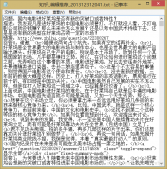這些標簽執行可在每一種語言找到的一種基本條件流程。 'If'標簽可用于本身或與“Else If''標簽和/或單/多'Else'標簽,如下圖所示:
|
1
2
3
4
5
6
7
8
9
|
<s:if test="%{false}"> <div>Will Not Be Executed</div></s:if><s:elseif test="%{true}"> <div>Will Be Executed</div></s:elseif><s:else> <div>Will Not Be Executed</div></s:else> |
創建動作類:
|
1
2
3
4
5
6
7
8
9
10
11
12
13
14
15
16
17
|
package com.yiibai.struts2;public class HelloWorldAction{ private String name; public String execute() throws Exception { return "success"; } public String getName() { return name; } public void setName(String name) { this.name = name; }} |
創建視圖
讓我們有index.jsp文件如下:
|
1
2
3
4
5
6
7
8
9
10
11
12
13
14
15
16
17
18
19
20
21
22
|
<%@ page language="java" contentType="text/html; charset=ISO-8859-1" pageEncoding="ISO-8859-1"%><%@ taglib prefix="s" uri="/struts-tags"%><!DOCTYPE html PUBLIC "-//W3C//DTD HTML 4.01 Transitional//EN""http://www.w3.org/TR/html4/loose.dtd"><html><head><title>Hello World</title></head><body> <h1>Hello World From Struts2</h1> <form action="hello"> <label for="name">Please pick a name</label><br/> <select name="name"> <option name="Mike">Mike</option> <option name="Jason">Jason</option> <option name="Mark">Mark</option> </select> <input type="submit" value="Say Hello"/> </form></body></html> |
接下來 helloWorld.jsp 演示使用, if, else 和 elseif 標簽:
|
1
2
3
4
5
6
7
8
9
10
11
12
13
14
15
16
17
18
19
|
<%@ page contentType="text/html; charset=UTF-8" %><%@ taglib prefix="s" uri="/struts-tags" %><html><head><title>Example of If and Else</title></head><body><b>Example of If and Else</b><br/><s:if test="name=='Mike'"> You have selected 'Mike'. </s:if><s:elseif test="name=='Jason'"> You have selected 'Jason'</s:elseif><s:else> You have not selected 'Mike' or 'Jason'.</s:else></body></html> |
在這里,如果標簽返回true,如果“test”屬性中指定的條件返回true。在我們的例子中,我們比較反對“Mike”。如果這個名字是Mike,標簽返回true,我們打印的字符串,否則“elseif”塊被執行,如果不滿意,那么被執行else塊。這是從傳統的,如果沒有什么不同,if, else if 可以在Java語言中。
配置文件
struts.xml 應該像這樣:
|
1
2
3
4
5
6
7
8
9
10
11
12
13
14
15
16
|
<?xml version="1.0" encoding="UTF-8"?><!DOCTYPE struts PUBLIC "-//Apache Software Foundation//DTD Struts Configuration 2.0//EN" "http://struts.apache.org/dtds/struts-2.0.dtd"><struts><constant name="struts.devMode" value="true" /> <package name="helloworld" extends="struts-default"> <action name="hello" class="com.yiibai.struts2.HelloWorldAction" method="execute"> <result name="success">/HelloWorld.jsp</result> </action> </package></struts> |
web.xml 應該像這樣:
|
1
2
3
4
5
6
7
8
9
10
11
12
13
14
15
16
17
18
19
20
21
22
23
24
|
<?xml version="1.0" encoding="UTF-8"?><web-app xmlns:xsi="http://www.w3.org/2001/XMLSchema-instance" xmlns="http://java.sun.com/xml/ns/javaee" xmlns:web="http://java.sun.com/xml/ns/javaee/web-app_2_5.xsd" xsi:schemaLocation="http://java.sun.com/xml/ns/javaee http://java.sun.com/xml/ns/javaee/web-app_3_0.xsd" id="WebApp_ID" version="3.0"> <display-name>Struts 2</display-name> <welcome-file-list> <welcome-file>index.jsp</welcome-file> </welcome-file-list> <filter> <filter-name>struts2</filter-name> <filter-class> org.apache.struts2.dispatcher.FilterDispatcher </filter-class> </filter> <filter-mapping> <filter-name>struts2</filter-name> <url-pattern>/*</url-pattern> </filter-mapping></web-app> |
右鍵點擊項目名稱,并單擊 Export > WAR File創建一個WAR文件。然后部署此WAR在Tomcat的webapps目錄下。最后,啟動Tomcat服務器和嘗試訪問URL http://localhost:8080/HelloWorldStruts2/index.jsp。這會給出以下畫面:

現在選擇“Mark”,并提交頁面。您應該看到翻頁
















